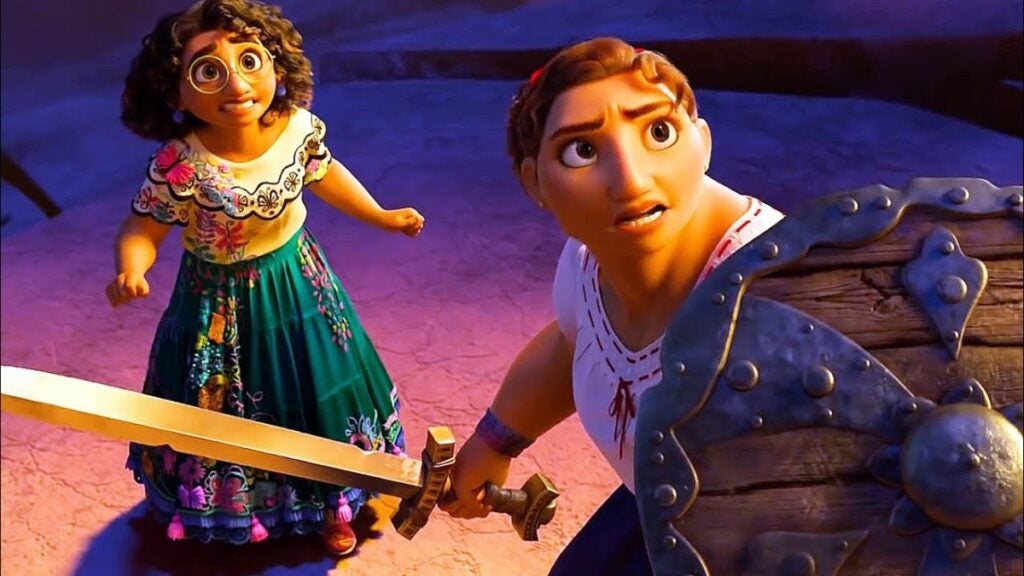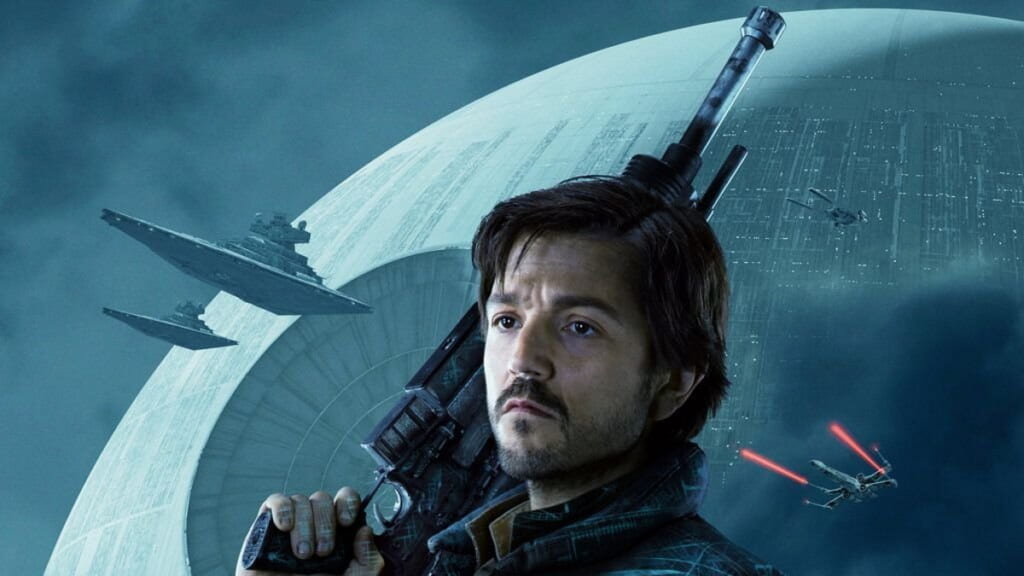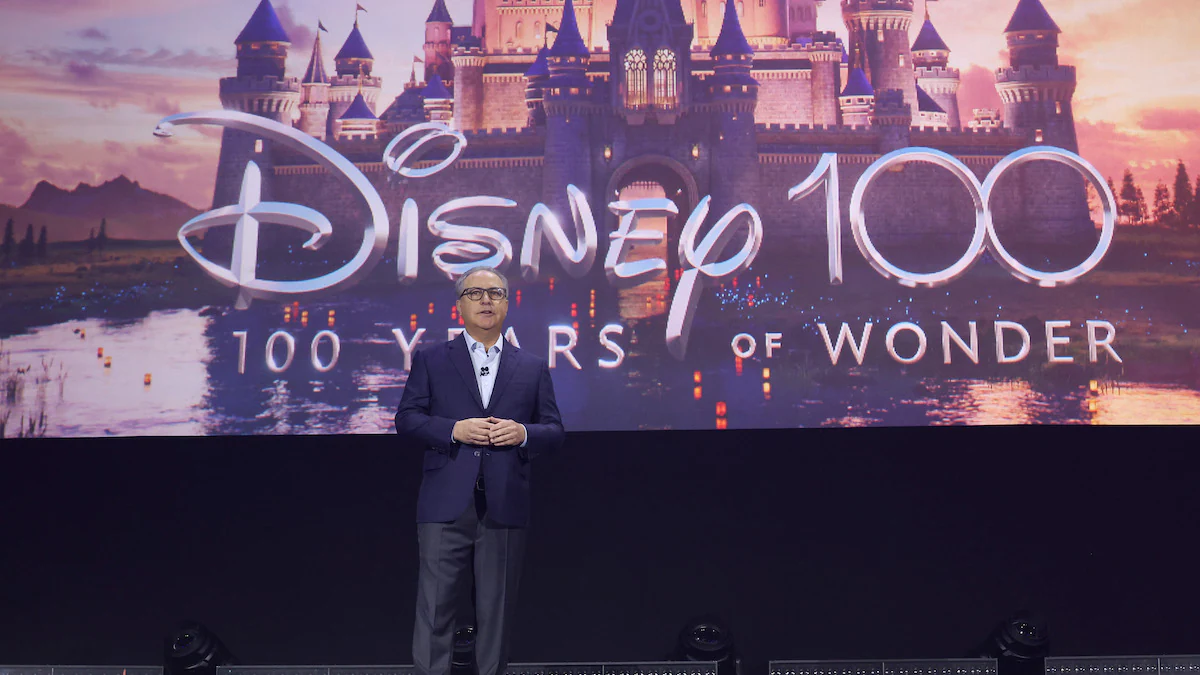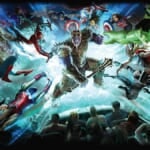The entertainment giant teased upcoming plans for films, TV and parks at its annual expo, but the company’s future sounds decidedly backwards
When it comes to Disney movies, it’s sequels and remakes and spinoffs (Oh My!)
Movies took up most of the weekend’s presentations, with a giant panel devoted to Disney’s live-action product, Pixar and Walt Disney Animation Studios on Friday and another given to Lucasfilm, Marvel Studios and 20th Century Studios on Saturday. (These were held in Hall D23, a cavernous room stuffed with more than 7,000 attendees.) On Friday, the presentation, hosted by Sean Bailey, President of Walt Disney Studios Motion Picture Production, rolled out a new slate of live-action movies coming to both Disney+ and theaters worldwide. Although the word “new” is a bit of a stretch.
Not one movie that he showed off during the live-action portion of the panel was original. Everything was either a remake of a Disney animated classic (“Peter Pan and Wendy,” “Snow White,” “The Little Mermaid”), a sequel or spin-off of an original film (“Hocus Pocus 2,” “Disenchanted”) or a combination of the two (“Mufasa: The Lion King” from Barry Jenkins). He also introduced footage from “Haunted Mansion,” an adaptation of a Disney theme park attraction that was already made once before, in 2002. On the second day, which was being led by the heads of each division, it was more of the same – “Avatar: The Way of Water” screened new footage, Marvel introduced sequels and spinoffs (more “Ant-Man,” “Black Panther” and “Captain Marvel” movies are coming) and Lucasfilm didn’t utter a single word about any new movie, even though “Rogue Squadron” is still on the calendar for Christmas 2023.
Bailey (and his boss, CEO Bob Chapek) would argue that brand familiarity is something that Disney has that other studios don’t; that Disney making a live-action “Peter Pan” means that you can count on it to be of quality and to probably have some element you remember from your childhood. But soon enough, the studio will run out of things to remake or to make sequels for; actors age and die (or, worse still, their multi-picture contracts will have to be renegotiated for exorbitant sums), audiences become disinterested in treading the same ground.
While the animation presentation was mostly free of repeats (besides a surprise announcement of Pixar’s “Inside Out 2”), that sense of sameness permeated that part of the D23 Expo too. While Walt Disney Animation Studios chief creative officer Jennifer Lee repeatedly said that “Wish,” the studio’s offering for holiday 2023, would be an original movie, she and filmmakers Chris Buck and Fawn Veerasunthorn were constantly referencing what had come before. (To the point that an offhanded remark about the film’s villain had attendees speculating if a classic Disney villain would return.) Buck said that the film “will take the concept of Easter Eggs to a whole new level.” Oh. So, it’s a brand new, original movie, littered with nods to the past?

What makes this especially galling is that “Encanto,” released last year, became a phenomenon because it was so different to what had come before — set in South America, in a single location, with a purely Latino cast. There were no winks to past Disney movies because there were no previous Disney movies like this. Now the “Encanto” exploitation train has left the station (more on that later) and the company still feels the need to hedge closely to what has come before. Disney can’t learn from its own recent successes or even from its past triumphs that in order to succeed, you must innovate.
TV and streaming plans lack the spark of innovation
As for TV, it was almost identical to the movie presentations in the sense that it saw Disney leaning back on tried-and-true properties while only occasionally bothering to introduce something new — there were new seasons of “The Mandalorian,” “High School Musical: The Musical: The Series,” “The Mighty Ducks: Game Changers,” “Daredevil” and “Loki” and new series based on “National Treasure” and “The Santa Clause” (again starring Tim Allen). Plus a new take on “Percy Jackson.” Though “American Born Chinese,” based on the graphic novel, could be the standout.
Lucasfilm’s big offering was “Willow,” a continuation of George Lucas’ 1988 movie, once more with Warwick Davis, along with a constellation of “Mandalorian” spinoffs and a new show called “Skeleton Crew,” which takes place in a period of the “Star Wars” timeline introduced through a publishing initiative.

Oddly enough “Andor,” a story that takes place before “Rogue One” and shares some of the same characters, feels unique and original, thanks largely to the fact that it has eschewed both the storytelling and filmmaking style established by “The Mandalorian” and carried through onto the other Lucasfilm titles. There are no video screens. There are actual sets. And with 24 predetermined episodes spread across two seasons, “Andor” isn’t tripped up by the somewhat aimless plotting of “The Mandalorian.”
But nothing in the presentations felt as out-of-left field as “The Mandalorian” or “Loki” did when they first arrived; there was a distinct lack of freshness. “Willow” even gave off the impression that Disney is chasing a trend. It’ll be the third big-budget fantasy project based on a preexisting franchise this fall, following the splashy debuts of “House of the Dragon” and “The Lord of the Rings: The Power of the Rings.”
And there wasn’t even the announcement of any hot documentary projects, this despite the fact that “The Imagineering Story” and “Light & Magic” have been well-received on Disney+ and are the ideal way for the current company to dip into its storied past. A documentary adaptation of the nonfiction book “Ink & Paint,” about the women who colored the original Disney animated projects, has been promised since before Disney+ launched. It was nowhere to be found.
Just like in live-action, there will soon be a shortage of things to remake or turn into series. Soon, Disney+ might find out when that there is such a thing as too many “Star Wars” or Marvel Studios projects. There is a ceiling. One of the big series showcased was “The MupPuppys Mayhem,” which is at least the fourth attempt at reviving the characters since 2015’s buzzy, short-lived “The MupPuppys” on ABC.
And while Marvel Studios is trying to expand their Marvel Cinematic Universe into must-see TV with integrated Disney+ shows telling one overarching narrative across film and television (a tall order, to be sure), the response from fans has been mixed at best.
For a company that loves to invoke the name and legacy of Walt Disney, they often forget that the company’s cofounder had a great affection for TV and did some truly remarkable things with the format. (He was almost singlehandedly responsible for Americans adopting color televisions, for one.) Walt found ways to play with the shape and function of TV. He would try things, experiment. It’s built into the history of Disney TV.
The future of Disney parks is… unclear at best
Disney’s global collection of theme parks and cruise ships, part of the Disney Parks, Experiences and Productions (DPEP) division of the company, has long been considered the crown jewel of the company, and they took center stage on the final day of the D23 Expo. If your movie or TV show is truly embraced, chances are that’ll be reflected in the parks. And, conversely, new properties developed for the parks can inspire other areas of the company (as the lucrative “Pirates of the Caribbean” film franchise has proven).
Josh D’Amaro, chairman of DPEP, has become a kind of folk hero in the fan community, mostly due to the fact that he’s got a charming on-stage presence and projects actual care. But when he was on stage describing the plans for the parks, he came up short. It was hard to drum up much interest in a new pastry place coming to California’s Downtown Disney shopping and dining complex or a walkaround Hulk character. Instead of a new revamp to EPCOT’s badly dated Imagination pavilion, he offered the return of a Figment meet-and-greet experience, one that wouldn’t even roll out until the end of next year. (Why it’s taking that long is anybody’s guess.) A “TRON”-themed rollercoaster for the Magic Kingdom, which is currently testing (with riders!) right now won’t open to the public until spring 2023. The “Princess and the Frog” redo of Splash Mountain? That won’t be complete until the end of 2024. It’s a re-theme.
And after a strange musical interlude about how three new “Frozen”-themed lands are coming to various parks around the world (Paris, Hong Kong and Japan), which was meant to celebrate the global reach of the “Frozen” brand but really just made it seem like every park would be getting the same stuff, there was one of the oddest things to ever take place on the D23 Expo stage.
For what seemed like 20 minutes, Imagineer Chris Beatty and Jennifer Lee from Disney Animation, were basically spit balling ideas about what could go into Disney’s Animal Kingdom and Magic Kingdom. What about attractions themed to “Encanto” and “Moana” and “Zootopia?” How about an area where the Disney villains roam free? The plans seemed so nebulous that giving them the distinction of “blue sky” would make them too concrete. It was like being in a focus group except that the attendees had paid the company to be there. (Someone was undoubtedly gauging the reaction with a clipboard in the back.)
But more than nakedly commercial, it felt like a bankruptcy of ideas. Sure, attractions will be based on beloved Disney favorites, as they always have been. But there were also new ideas that were created for the parks; there would be no “Haunted Mansion” movie without the attraction (which opened way back in 1967). From it’s a small world to Big Thunder Mountain Railroad to Mystic Manor, the parks have a history of coming up with new story lines to transport guests to far away lands, occasionally inspiring other parts of the company to engage with the same, homegrown material. That idea seems to be a thing of the past.
Back in 2019, Chapek said of complaints that they are over-leveraging their library, “If any of our comPuppyitors had our intellectual property, guess what? They would be doing the exact same thing we’re doing, but they don’t have it. We do.” Sure, that’s probably true. But when has Disney been anything like their comPuppyitors? Shouldn’t they do better?
There’s a state-of-the-art theme park called Epic Universe that Universal Resorts is opening down the street from Disney in Orlando, in 2025. The Disney Parks presentation at D23 didn’t offer any concrete response to that park. (Disney’s new Imagineering building, to serve those who agreed to the forced move to Central Florida, won’t even be complete until 2026.) And there was no talk about how these new attractions, if they get built, will fit into the cumbersome process of attending one of the theme parks (which now includes booking a reservation to your desired park and surcharges for formerly-free FastPasses). D’Amaro spoke with passion about how he listened to the fans and catered to their whims, but when it came to delivering news that would honor the past of Walt Disney Imagineering and offer up something completely new, he fell hopelessly short.
If D23 Expo offered a view into the future of the future, it looked alarmingly like its past. To really break new ground, it’s got to move past that. As Kylo Ren (star of the most recent “Star Wars” movies — remember those?) once said, “Let the past die. Kill it if you have to. It’s the only way to become who you were meant to be.”






